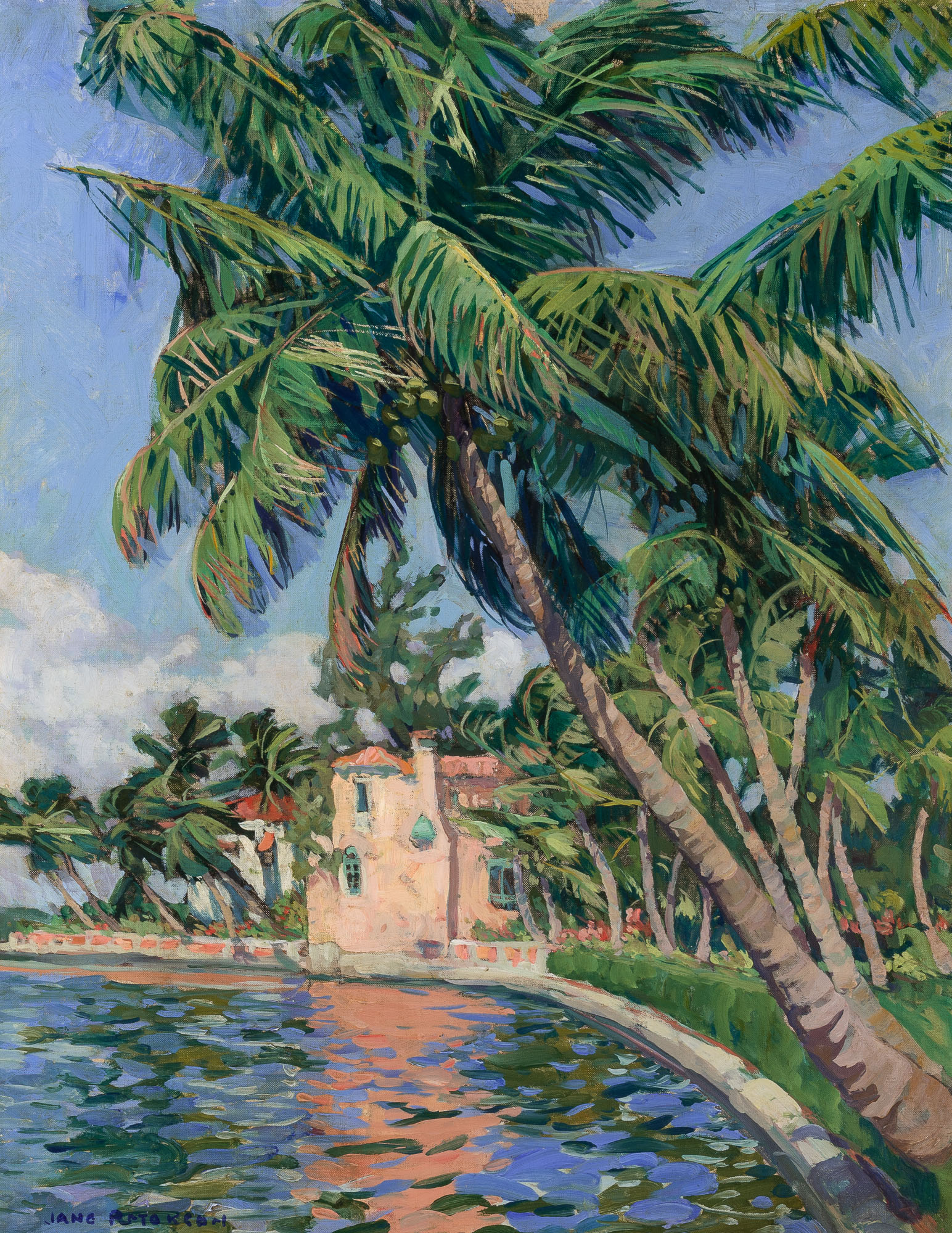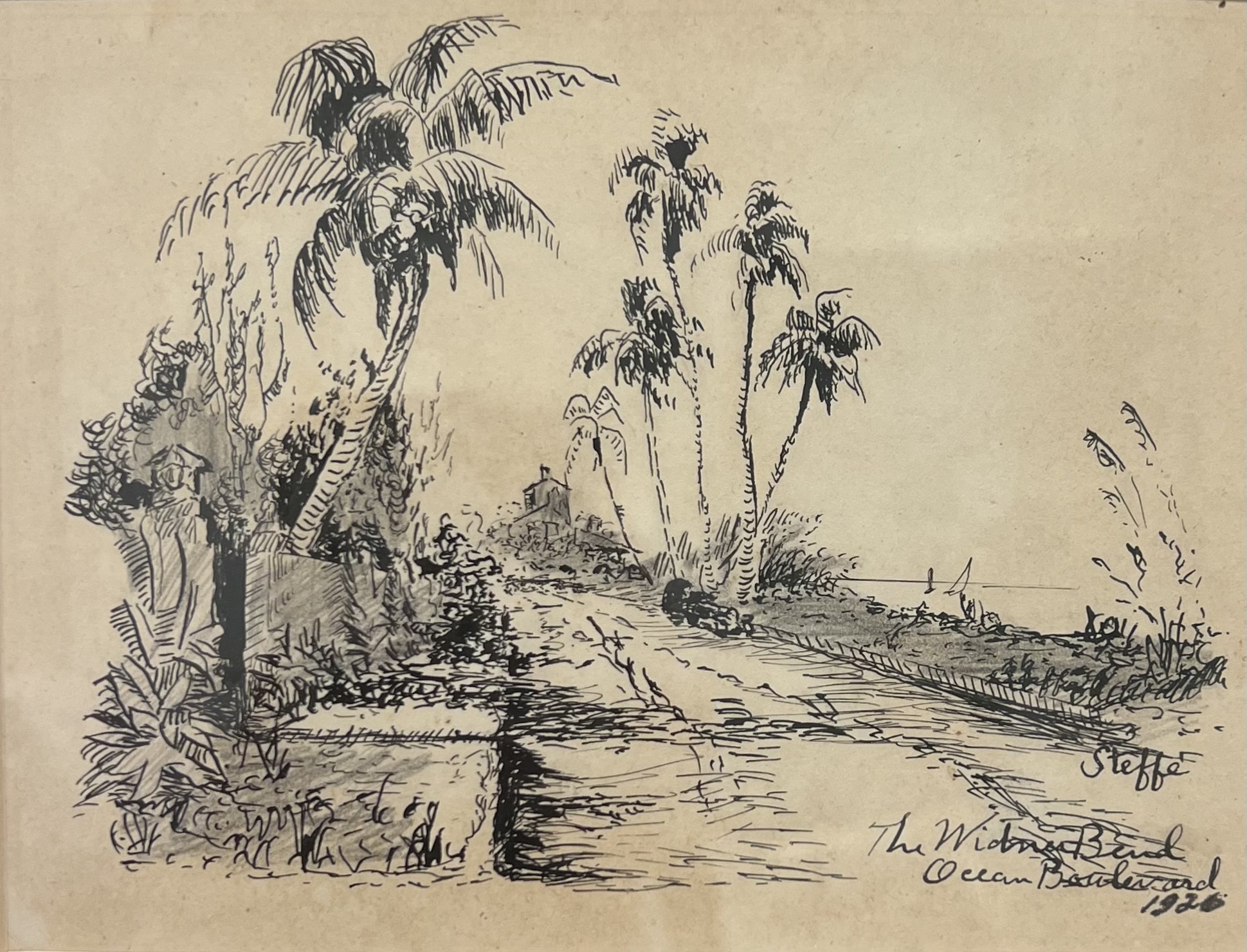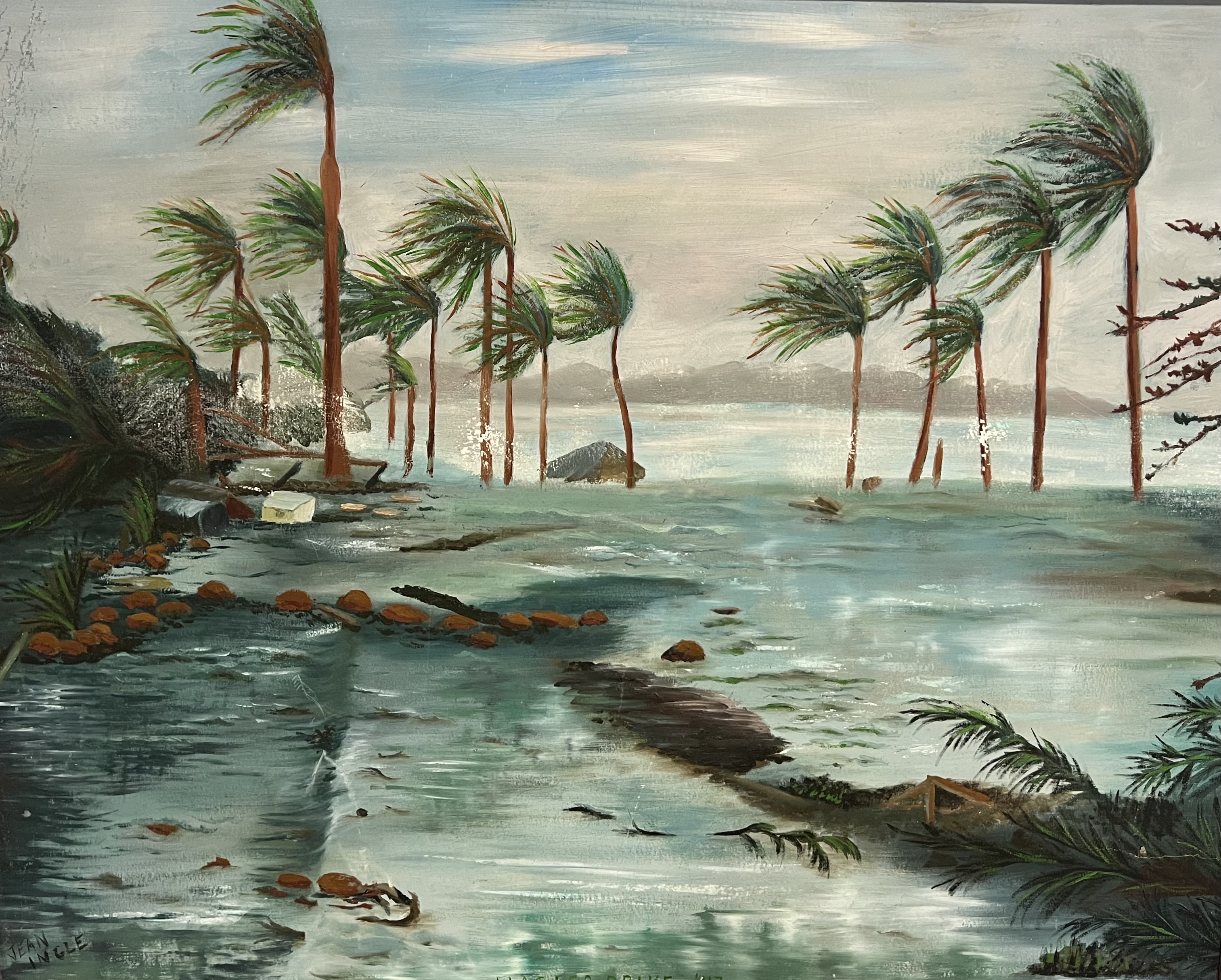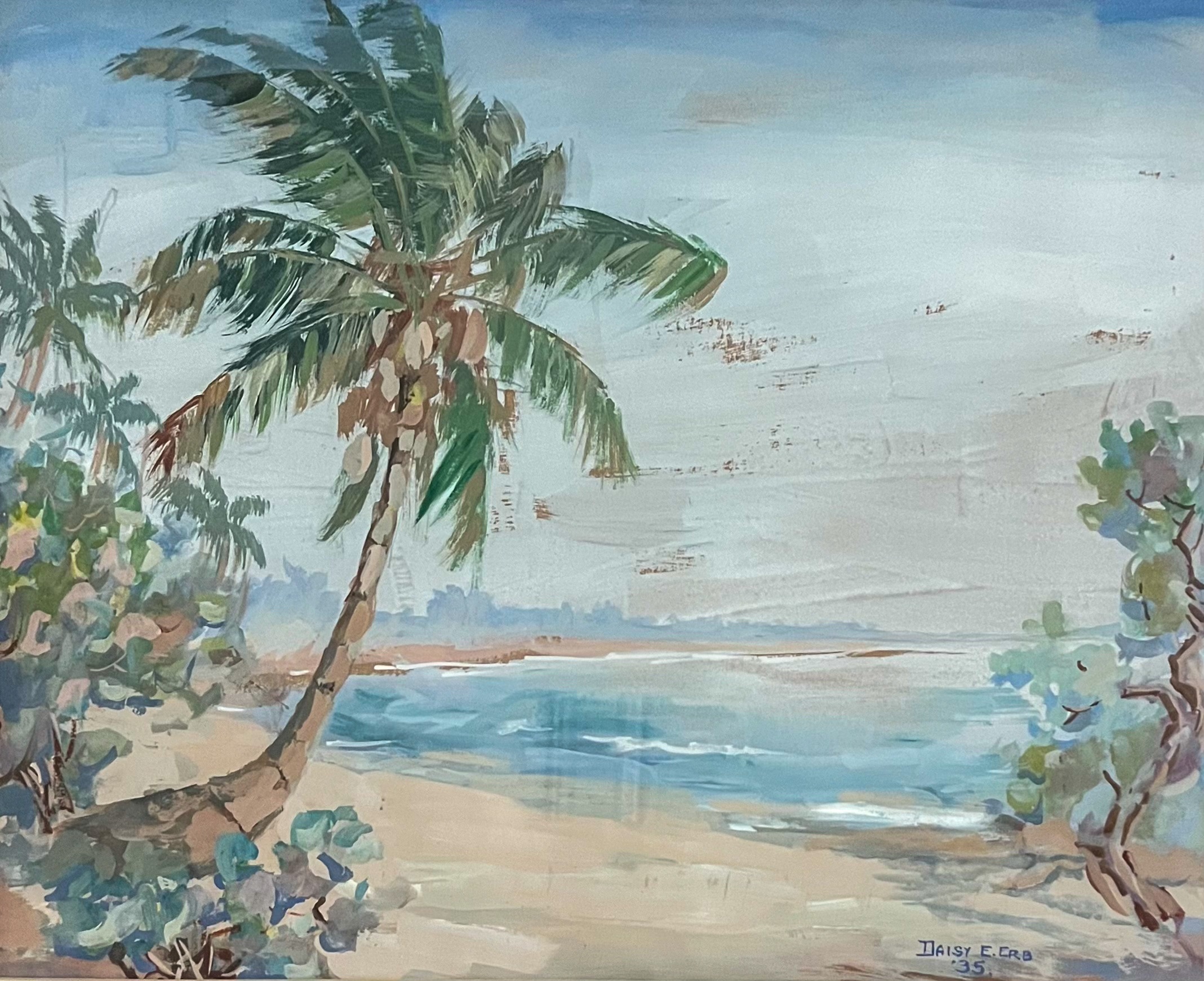

07/21/2025 General, General Paintings, Florida
Palm Beach has long attracted incredibly talented artists—both prominent and little-known— who have fallen in love with the area (rightfully so) and depicted Florida in all its glory. Currently on view at DOYLE Palm Beach is Vintage Visions of Florida, a selling exhibition of works by various artists celebrating the Sunshine State and the little paradise we call “the island.”
Henry Morrison Flagler fell in love with Florida while on a honeymoon with his second wife in 1883. The Flaglers saw potential and promise in the state and realized they had found the perfect place to build an industry and plant roots. Flagler abandoned his heavy involvement in the oil company he had founded, the Standard Oil Company, and built a grand hotel in Saint Augustine. The entrepreneur realized that he needed to provide a way for visitors to swiftly travel to the city and soon developed the Florida East Coast Railway, a train line that connected to the main railway system of the east coast that now reached Saint Augustine.
At his hotel, the Ponce de Leon, Henry Morrison Flagler created studios and accommodations for visiting artists. A notable guest of Flagler’s was Laura Woodward, a well-known landscape painter and traveler. Woodward would wander on foot through the trees, capturing undiscovered views. As she traveled further south, the artist began to hear about a place she had to visit—Palm Beach, a small island off the coast.
For two years, Woodward explored the Palm Beach and Lake Worth area, enchanted by its beauty. Once she returned to Flagler, the artist urged him to extend the train line beyond Saint Augustine, down the Florida coast to Palm Beach. Like Woodward, after hearing so much about the beautiful island and its surrounding area, Henry Morrison Flagler made a pilgrimage to visit. He had already been won over by the artist’s captivating scenes and flower studies, but seeing Palm Beach in person convinced him to extend the railroad south and develop what is now known as the Town of Palm Beach.

Palm Beach grew from a small island of huts and coconuts into the town we know today—home to the fabulous, posh, and prim. The area witnessed an incredible boom, and between 1920 and 1927, the population quadrupled. Despite mounting requests from the high-society women of Palm Beach to have their portraits drawn and homes adorned with murals, some artists ignored the call of cash and opted instead to capture the natural beauty of the area, rather than its wealthy residents. Whether inspired by the graceful palm trees or the unique Spanish-influenced architecture, ideal for dynamic color studies; artists found peace, calm, and passion in the blue and purple skies. The renowned artist Jane Peterson highlights this beauty in her painting, Palm Beach, Villa des Cygnes, depicting a pink home in Palm Beach, shielded by lush greenery and juxtaposed against the vibrant blue inlet beside the estate. Palm Beach, Villa des Cygnes is one of Doyle’s most notable Florida paintings, a distinction secured by a recent auction sale that garnered over $80,000.

A similar piece by Florida artist Steffe in the current exhibition captures in pen and ink the ‘Il Palmetto’ estate, which was built by the Widener family. Steffe drew The Widener Bend, Ocean Boulevard in 1926, long before Palm Beach had paved roads and a Publix. The dirt trail leading to the house is littered with ferns, grass, and palm trees, all rendered in quick, fine lines. The feeling of the piece is vintage and humble, with the famous estate hidden away at the end of the road. The drawing is an artifact from a time when the island’s opulence was still in development, and the palms and sand still ruled over what are now streets and sprawling homes.
In 1928, one of Florida’s most devastating hurricanes struck the island. The Okeechobee Hurricane, also known as the San Felipe Segundo Hurricane, remains the second deadliest natural disaster in U.S. history, killing over 3,000 people. Any house in Palm Beach was either hit by the inlet on one side of the island or the ocean on the other, resulting in catastrophic damage. Florida didn’t experience anything that rivaled the storm until another monstrosity made its way toward the southeast coast in 1947. The eye of the category 4 hurricane struck Fort Lauderdale head-on, but due to its sheer size, Palm Beach was also caught in the devastation, receiving an 11-foot storm surge and significant flooding.

West Palm Beach artist Jean Ingle illustrates how high the water rose and the wind blew in his 1947 painting, Flagler Drive. The scene depicts the Palm Beach inlet, which separates the island from the mainland, spilling onto the coast during the storm. Water floods the ground and merges with the inlet, making it appear as if the palm trees are growing straight out of the ocean. Even though the trunks remain unmoving and strong in their position, the palm fronds almost look like streamers, or hair in a busy salon, the wind whipping the leaves violently and almost ripping them from the source. The scene is a reminder of the annual hurricane season when Florida isn’t always a peaceful haven.

No matter how many goliath hurricanes pass through, visitors and artists continue to flock to Palm Beach to experience the beauty sought after by so many. One artist who attracted fellow painters to Palm Beach was Daisy Erb, a local woman who dedicated her life not only to painting, but also to creating a space for women to practice art. She moved to Florida in 1910 and became chairwoman of the Palm Beach Women’s Club art committee, and later founded the Palm Beach Women’s Sketch Club. Like Laura Woodward, these women would traverse the area, discovering secluded beaches and small groves to paint. Daisy Erb’s Ocean Breeze from 1935, depicts a likely painting spot for these groups. A lone palm stands guard at the head of a path to the beach, like a bouncer at the coolest bar in town (or a sand bar, in this case). The work is a bright, pastel colored gouache on paper that was once owned by a prominent Palm Beach family. The painting feels private in itself, the foliage on either side creating something reminiscent of a gate in front of the stunning, crashing waves and quiet beach.
The island has evolved from a place full of little hideaways and undiscovered beaches into a bustling town filled with visitors and “snowbirds” flocking to find a spot to settle their blankets and beach umbrellas. Millionaires and billionaires, and even some presidents, have made their way to the island to stake their claim on beach plots and oceanside homes. Although the inhabitants have changed over the years, there remains a deep appreciation for the beauty of Palm Beach that sometimes even rivals the first settler’s admiration. Nonetheless, nothing compares to the love and dedication for Palm Beach shown by these painters. We invite you to come visit DOYLE Palm Beach and see the beauty of Florida through the artists’ eyes for yourself!
— Hadley Finch
DOYLE Palm Beach
Summer Intern 2025
To read Part I of this essay, Click Here
On view Monday – Friday, 10am – 5pm, through August 1.
DOYLE
Auctioneers & Appraisers
210 Brazilian Avenue
Palm Beach, Florida
561-360-2308
DoyleFL@Doyle.com